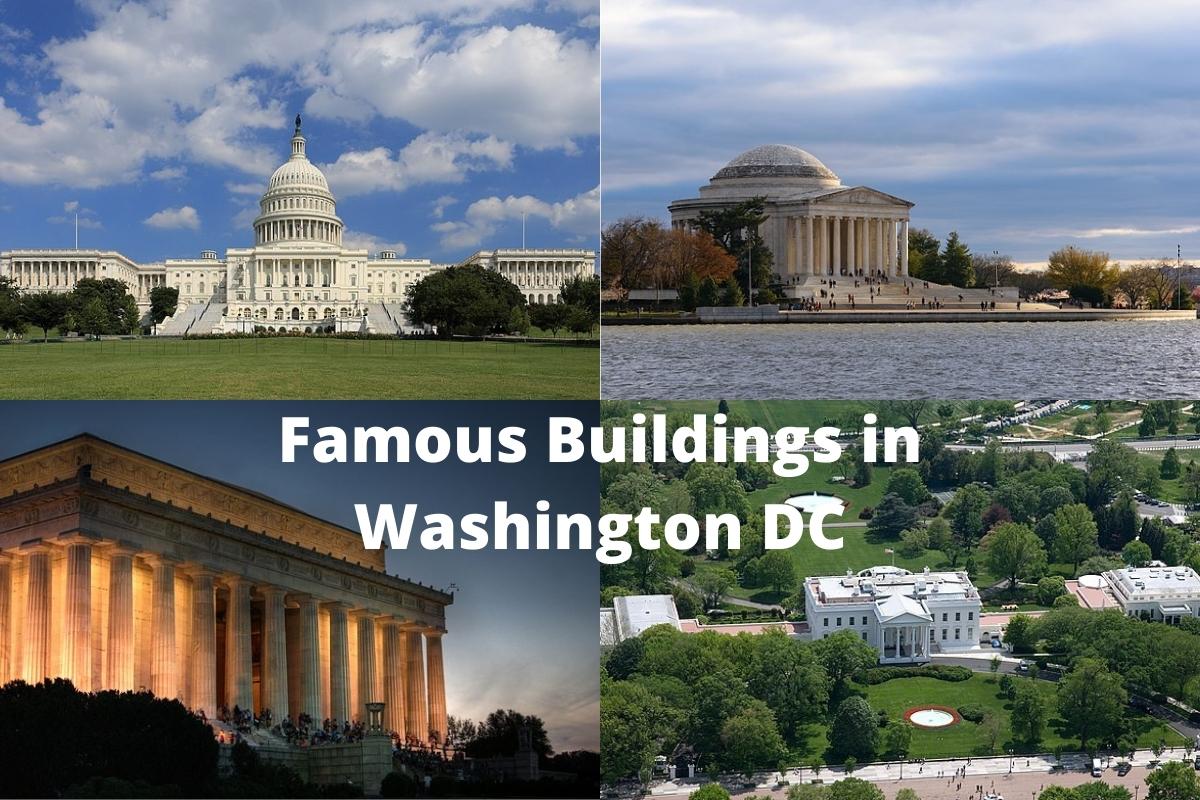The United States capital of Washington, D.C. is teeming with various monuments and architectural wonders commemorating historical figures and events.
The American capital city is often described as one of the most decorated in terms of the various kinds of architecture represented, as well as the scale and beauty of some of the buildings throughout the city.
Some of the most iconic buildings in Washington, D.C. were designed and constructed by many of the world’s great architects.
In the following sections, we will examine 10 of the most famous buildings in Washington, D.C. and the architects credited with designing them, as well as some of the history behind these incredible structures.
Famous Buildings in Washington DC
1. United States Capitol
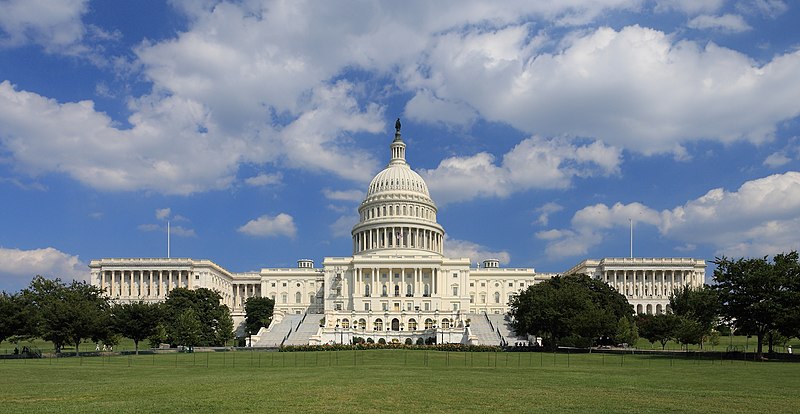
One of the most easily-recognizable buildings in Washington, D.C. is the United States Capitol building. This Neoclassical style architectural wonder was built to house the legislative branch of government that includes the United States House and Senate.
It is located in a section of the city that’s known as Capitol Hill, which features the National Mall that extends outward from the United States Capitol building all the way out to the Washington Monument.
The building was designed by William Thornton, who was one of the most celebrated architects in American history. Thornton was also known for being an outstanding painter, physician and inventor, in addition to his architectural prowess.
Construction on the United States Capitol building started in the summer of 1793, shortly after the end of the country’s war against Great Britain to gain independence.
Also Read: Famous Landmarks in Washington DC
The United States Capitol building was completed in 1800 and opened in the same year to the governmental body of the country. A few years later in 1814, British troops would invade Washington, D.C. and set fire to many of the capital buildings, one of them being the United States Capitol.
The structure was fully restored within the next few decades and various extensions have been made over the years. The capitol building is iconic in America for its distinct domed top and distinct neoclassical design.
2. Washington Monument
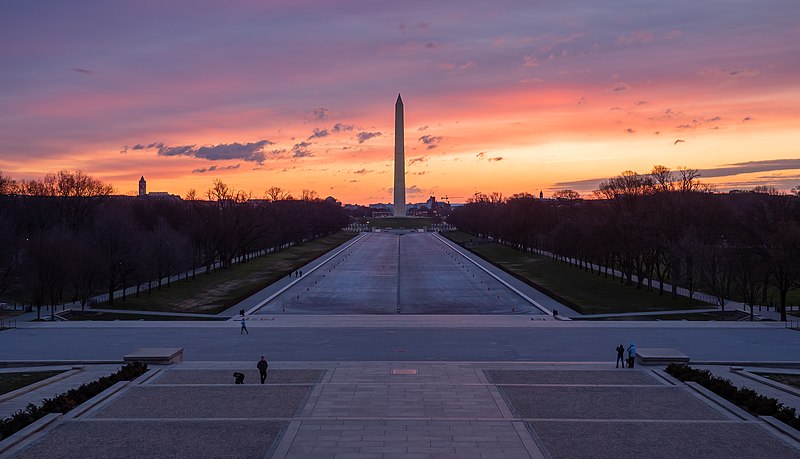
Another one of the most iconic structures in the United States, as well as in Washington, D.C. is the Washington Monument.
This massive obelisk was erected by officials to honor the legacy of George Washington, who was the United States Army’s General during the Revolutionary war. Washington would later go on to be the nation’s first president, serving for two terms before retiring from his position of leadership in America.
The Washington Monument is modeled after the obelisks found in ancient Egypt and was designed by Robert Mills, an American architect from South Carolina who was known for his work in creating various monument-style structures.
Construction on the Washington Monument started in 1848 and it was completed in two phases, one that was finished in 1854 and the other being completed in 1884.
The Washington Monument is one of the most-visited sites in the United States’ capital city, drawing at least 500,000 people each year.
Visitors can take the elevator inside the monument to its top and enjoy a view of the city from the 554-foot-tall structure. It is the tallest monumental column in the world, as well as the world’s tallest obelisk.
3. White House

The White House is perhaps the most famous building in all of Washington, D.C. It is the residence for the sitting president of the United States and is a massive, beautifully-decorated structure that serves a variety of purposes within the governmental functions of the country, as well as various events held by America’s executive branch of government.
The White House has a storied history, much like the other structures on our list, and was designed by James Hoban, an Irish architect who is best-known for his work in this building.
The designs for the White House were extensive, even for the late 18th century. Construction began on the project in the fall of 1792 and it would take a full 8 years before it was completed in 1800.
During the British invasion of 1814, the White House, along with many other prominent structures in Washington, D.C. was badly burned. Efforts to rebuild the White House were successful and it was fully restored to its former glory just a few years later.
The White House is distinct in its neoclassical design and features columns on both its north and south-facing entrances. It features at least 132 different rooms, including many of the large ballrooms and halls.
4. Smithsonian Institution Building
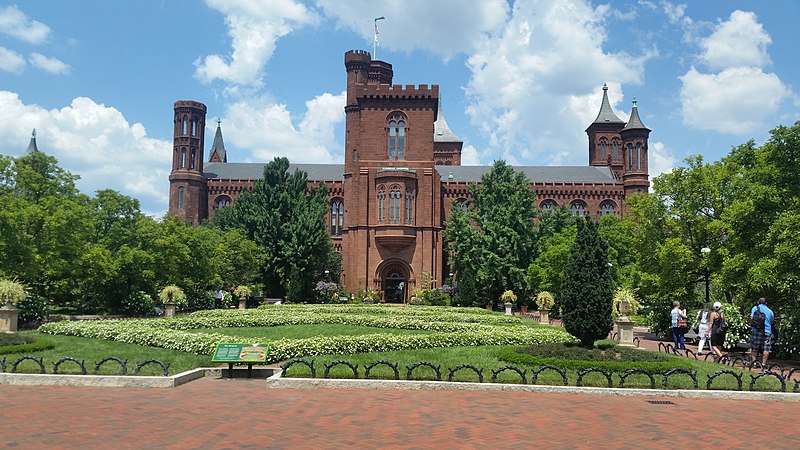
The Smithsonian Institution Building is the most well-known museum in the United States and enjoys distinction as the most prestigious of any in the Washington, D.C. area.
The building is located near the National Mall, which connects the Washington Monument with the United States Capitol building.
The Smithsonian Institution Building was designed by James Renwick, Jr., who was a famous architect and is regarded as one of the most accomplished American architects in history.
Also Read: Buildings in San Diego
Construction on the Smithsonian Institution Building began in 1849 and would take another 6 years before it was fully completed in 1855.
The structure’s exterior design is one of the most iconic of any building in Washington, D.C. as it features red-sandstone and is built according to the Norman Revival architectural style.
Renwick and his colleagues designed the building with a late Romanesque style, which accounts for the pointed towers that are found on each side.
Many of the locals have nicknamed the Smithsonian Institution Building “The Castle” due to its exterior appearance, but the interior is an expansive combination of various exhibitions.
The contents of the Smithsonian Institution Building are some of the most historic items and artifacts of any museum in the country in regard to American history.
5. Jefferson Memorial
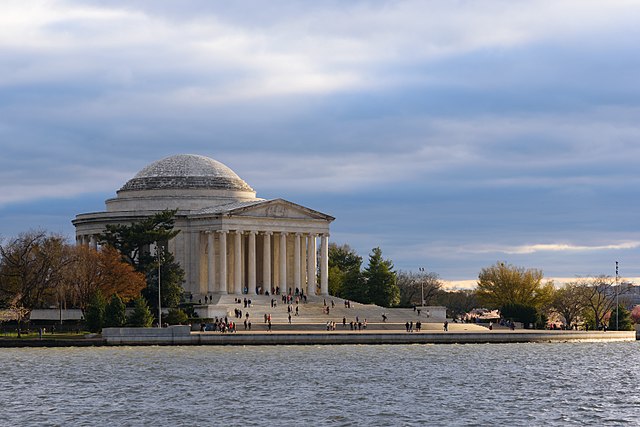
Thomas Jefferson is remembered as one of the founding fathers of the United States of America. He served as the country’s third president and is highly-regarded for his valor in battle against the British forces, as well as his political aptitude.
The Jefferson Memorial is a building that was erected in honor of Jefferson and is one of the most visited sites in Washington, D.C.
Also Read: Famous Buildings in Philadelphia
The memorial was designed by John Russell Pope, a famous American architect who was known for designing some of the country’s most well-known monuments and commemorative structures.
Pope worked alongside John McShain, a prominent builder and contractor from Philadelphia. Construction on the Jefferson Memorial began in 1939 and the project was completed after 1943.
The Jefferson Memorial is well-known for its distinct Classical Revival architectural style. Pope’s design is reminiscent of the ancient Greek and Roman structures, which many of the buildings in Washington, D.C. are known for.
The interior of the Jefferson Memorial features a spacious rotunda with a large gold-colored statue of Thomas Jefferson.
6. Lincoln Memorial
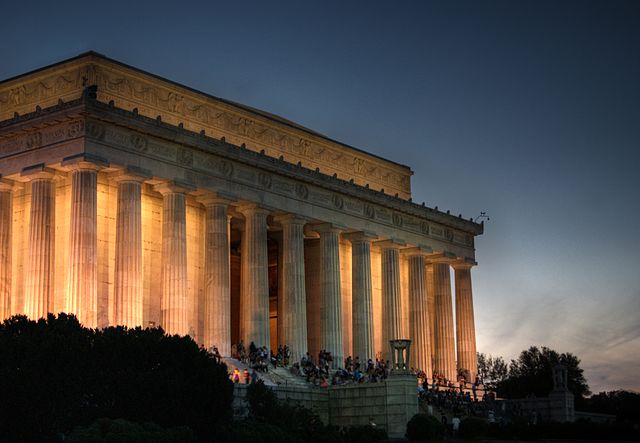
Abraham Lincoln is highly-regarded as one of the most respected presidents in American history. His presidential term was one of the most tumultuous in the country’s history as the Civil War erupted in 1861, shortly after Lincoln took office. The Lincoln Memorial was a massive building located on the western end of the National Mall.
The memorial was designed by Henry Bacon, one of the most celebrated architects in American history. Bacon designed the Lincoln Memorial according to the Greek Revival style that many of the most prominent buildings in Washington, D.C are built with.
Construction on the memorial began in 1914 and the project was finished and opened in 1922.
The Lincoln Memorial is regarded as one of the most historic sites in the country as the interior features a massive statue of Abraham Lincoln. The statue portrays Lincoln seated, gazing outward into the National Mall toward the Washington Monument.
There is a large, open staircase leading up to the memorial and the site is one of the most-visited places in Washington, D.C.
7. Washington National Cathedral
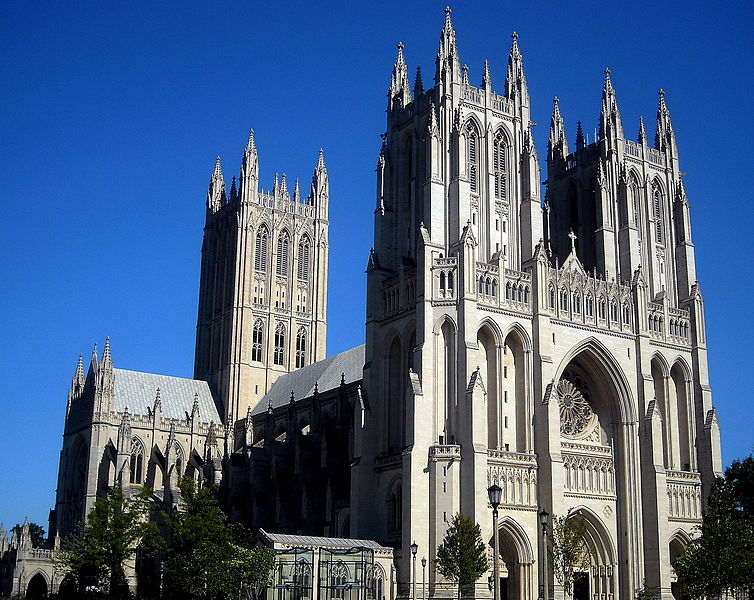
The Washington National Cathedral is considered to be one of the most elegant cathedrals in the United States.
It sits in the heart of Washington, D.C. city and is one of the most well-known cathedrals that’s owned by the Episcopal Church. The Washington National Cathedral was designed by Phillip Hubert Frohman, who was one of the most famous architects in the country during the early 20th century.
Construction on the project began in the summer of 1907 with a commemorative speech by sitting president Theodore Roosevelt. The project would take more than a decade and was finally completed in 1912, yet there were many additions and renovations made to the structure since that time.
Also Read: Famous Buildings in Seattle
The building was done according to the Neo-Gothic architectural style and is considered one of the most prestigious churches in the Washington, D.C. area.
It has become a major tourist attraction and is one of the most prominent churches that’s used for official ceremonies or funerals for famous politicians. The building’s appearance is reminiscent of some of the most famous cathedrals in Europe.
8. Ford’s Theatre
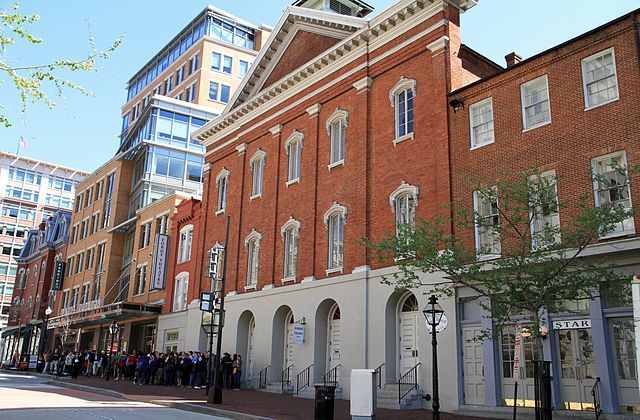
Another one of the most famous buildings in Washington, D.C. is Ford’s Theatre. This structure is not necessarily known for its architectural beauty, but instead because it was the site of Abraham Lincoln’s assasination in April of 1865.
It was designed by Charles Lessig, a little-known architect who built certain structures during the mid-19th century.
Construction on the theatre began around 1860’s and the project was finished and opened in 1863. Lincoln was shot by a Confederate operative named John Wilkes Booth during the performance on April 14, 1865.
The incident was one that shook the nation and put the Ford’s Theatre on the map as one of the most notorious and infamous buildings in Washington, D.C.
Since the assassination took place, the Ford’s Theatre has become a major tourist attraction, as well as another building that’s just a short distance away. After Lincoln was shot, he was taken to a home known as the Peterson House.
9. Washington Union Station
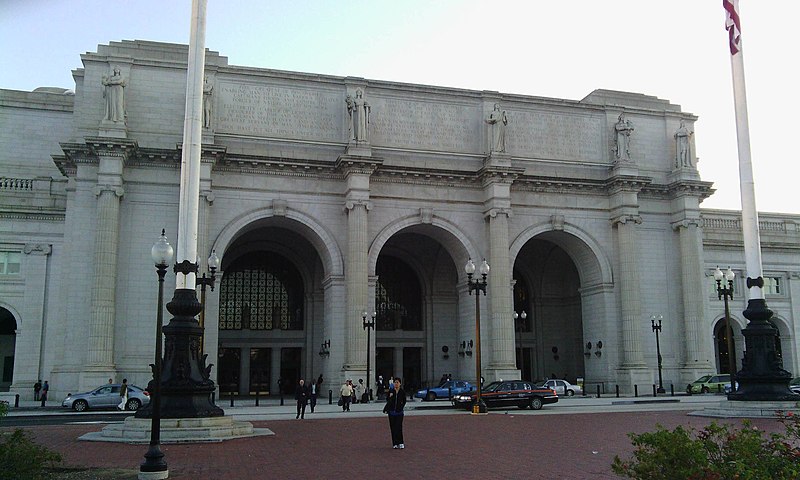
Throughout the 20th century, the Washington Union Station was the most prominent train station and transportation hub in the nation’s capital of Washington, D.C.
Throughout the 1900s, The Washington Union Station became less used as a train station and was looked upon more as a tourist attraction. The station was designed by William Pierce Anderson, a well-known American architect from Chicago who worked under the famous architectural firm, D.H. Burnham & Company.
The Washington Union Station was built on the site of another train station that was prominently used throughout the 19th century.
The site was home to two different stations, the New Jersey Avenue Station and the Baltimore and Potomac Railroad Station. Construction on the building began in the early 1900’s and finished in 1908.
The elaborately-designed station is now used as a tourist destination as it is also home to Amtrak’s headquarters for the Washington, D.C. area. It is one of the busiest stations in the country and was built according to Classical and Beaux-Arts architectural style.
10. National Portrait Gallery
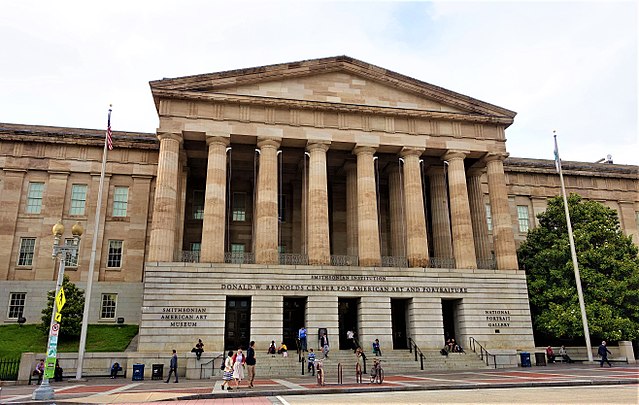
Another one of Washington, D.C.’s most prominent museums is the National Portrait Gallery. The gallery’s building is one that is distinct in that it features a similar Classical architectural style. Many consider the National Portrait Gallery to be the most celebrated art galleries or exhibitions in the country.
The current structure is one of the oldest in Washington, D.C. as it was originally established in 1836 as a repository that held many of the nation’s most important legal and political documents. The building was used in 1959 for the first time to hold a major art exhibition and was then known as the National Portrait Gallery.
The structure’s majestic, Classical design distinguishes the building from many of the others in the surrounding area.
It has been referred to as the “American Pantheon” due to its classical-style architecture. The building was opened to the public in 1968 as the National Portrait Gallery and is now part of the Smithsonian Institution.

